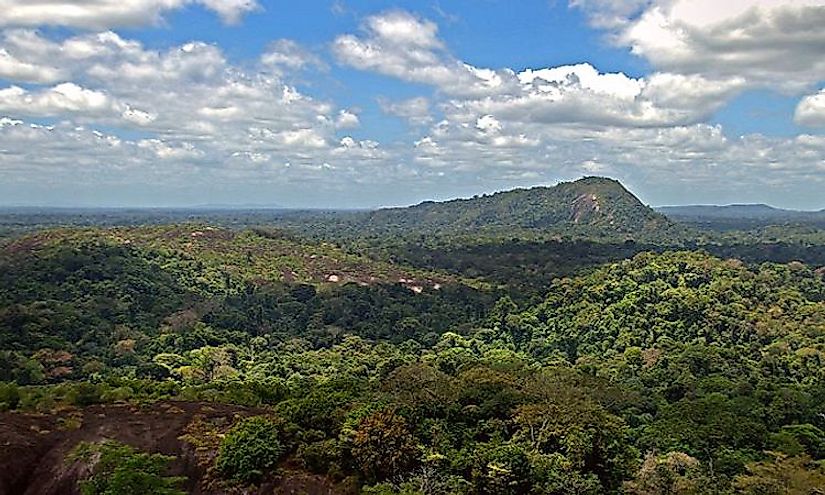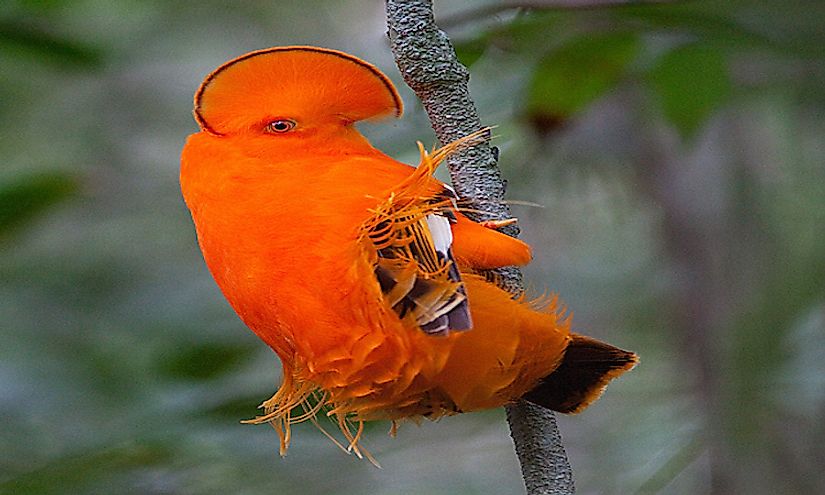Central Suriname Nature Reserve

5. Description -
In 1998 the government of Suriname and the American nonprofit environmental organization Conservation International came together and created the Central Suriname Nature Reserve by combining three already existing nature reserves in Suriname, Elierts de Haan Gebergte, Ralleighvallen and Tafelberg. Two years later in 2000, the Central Suriname Nature Reserve was designated as a United Nations Educational, Scientific and Cultural Organization (UNESCO) World Heritage Site because of the nature reserve's impeccable tropical rain-forest ecosystem. Currently, the Central Suriname Nature Reserve spans 16,000 square kilometers (6,178 square miles) of land that is made up of lowland and montane primary tropical rain-forest, as well some sections of the higher elevation areas of the Guiana Shield, which are known as the Guyana Highlands.
4. Historical Role -
There have been cultural artifacts and petroglyphs found beside creeks and rivers in various parts of the Central Suriname Nature Reserve that date from before Columbus's arrival to the New World. This has led historians to speculate that at one point there may have been a potentially important cultural heritage that was hidden in the area by some indigenous group of people.
3. Significance to Tourism and Science-
The Voltzberg Dome is a granite dome that stands at 245 meters (803.8 feet) tall and it serves as a major tourists attraction for visitors to the Central Suriname Nature Reserve. The Voltzberg Dome gives visitors a chance to walk up its path to the top, which provides a incredibly scenic view of the rain-forest at its peak. At the bottom of the Voltzberg dome there is a scientific research station that is used to study the plants and animals of the area. The Voltzberg dome is the most well known of the several granite domes that are in the surrounding rain-forest. Visitors can also take guided tours with tour guides to explore and experience the jungle by bus, foot and by boat. There Central Suriname Nature Reserve is also known for its rapids that can be experience by tourists too. That nature reserve also has the Julianatop, which standing at 1,026 meters (3,366 feet) tall is the tallest mountain in Suriname.
2. Habitats and Biodiversity -

That Central Suriname Nature Reserve is well known for the variety of over 400 different bird species that live in the area, especially the Guiana cock-of-the-rock (Rupicola rupicola) which is only located in the Guiana Shield. Other notable bird species include the harpy eagle (Harpia harpyja) and the scarlet macaw (Ara macao. The area also houses other unique species like the jaguar, giant armadillo, giant river otter, eight different species of primates and many other different species. The aforementioned granite domes in the Central Suriname Nature Reserve managed to create a unique bio-trope for xerophytic plant species, which are plant species that can survive on little liquid water. These xerophytic plant species are also endemic to the area due to how the barren surface of the granite is exposed to the rays from the sun. There is also great plant diversity in the Central Suriname Nature Reserve with around 5,000 different types of vascular plant species that have been found so far.
1. Environmental Threats and Conservation Efforts -
The Central Suriname Nature Reserve has mostly been unaffected by human actives, mostly because of how inaccessible the area is. This has allowed the area to keep its wide variety of ecosystem, plants and animals species and keep its noteworthy mount of endemic species intact. The remoteness and inaccessibility of the area does have a negative consequence in that their is limited conservation activities that scientists and organizations can perform. One threat to the area in the future is that the areas around the Central Suriname Nature Reserve will continue to be developed and have more people move into the area, which could possibly affect to the ecological and biological processes and communities of animals and plants that lives in the area.







